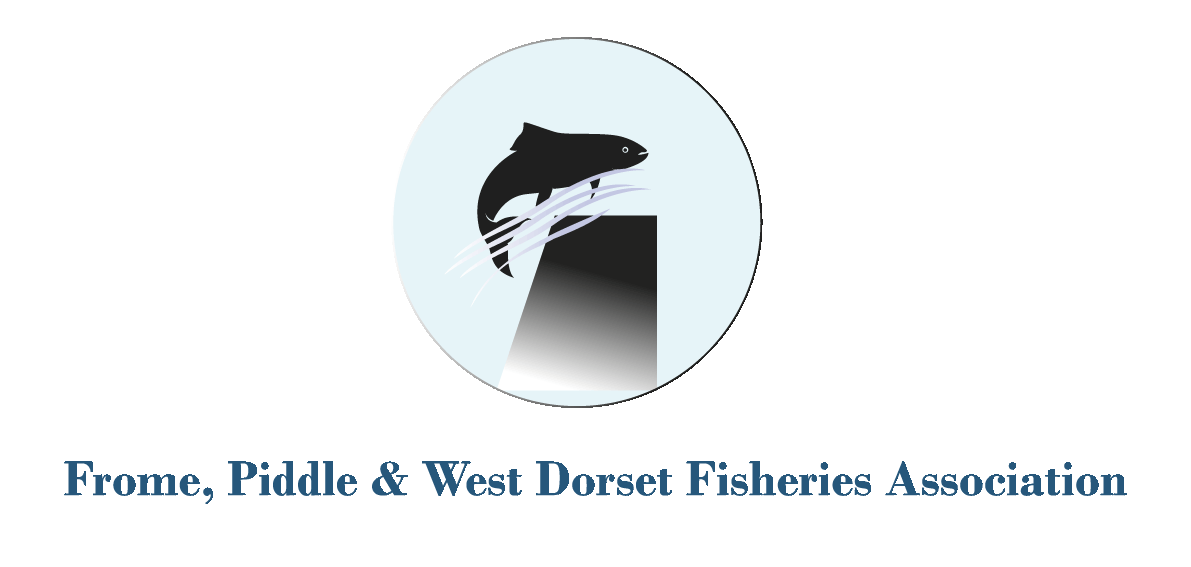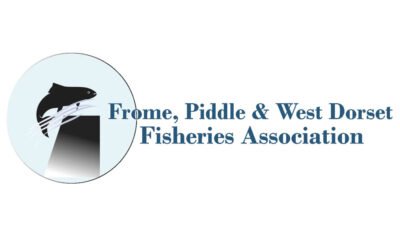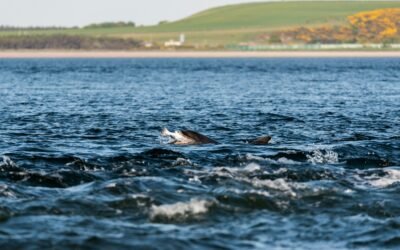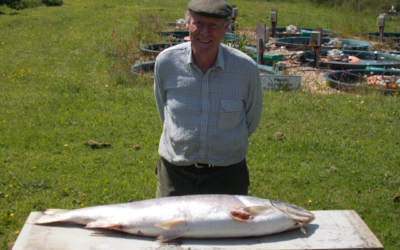
Does good quality stock fencing along stream sides help fish and wildlife – a study’
News
Contact
Does good quality stock fencing along stream sides help fish and wildlife
– a study
Devil’s Brook Environmental Improvements 2021
Adrian Simmons Melcombe Bingham:
Since retiring from full time River Keeping on a Chalk Stream in Wiltshire and moving to this lovely area, I have become very interested in how the infant Devil’s Brook (DB) develops on its way down the valley, joining the Cheselbourne and then changes in character into a mature Chalk Stream before it joins the River Piddle. Some of the geology of the upper DB catchment is not chalk, it has some Sandstone and areas of Clay. These and other differences in the geology change the nature of the habitats and often the water clarity.
I have been following the previous articles in Village News under the Cheselbourne Parish Council section with keen interest. There has been marvellous progress on or near the Devil’s Brook and it’s tributary the Cheselbourne, led by the Cheselbourne PC and the Cheselbourne Environment Group with help from the Farming & Wildlife Advisory Group South West (FWAGSW), the Wild Trout Trust (WTT), the Dorset Wildlife Trust, the Environment Agency, Wessex Water and with great cooperation from local landowners and farm managers.
Several sections of the lower DB have had stock fencing put up in 2020 & 2021 to allow the stream banks to heal and native emergent plants to colonise. This has increased Aquatic Invertebrates and fish numbers as well as reducing the amount of silt that enters the stream. The Invertebrates shown in the photos below can be monitored and are invaluable in picking up early signs of water quality problems. The subject of river pollution, particularly from sewage, has been a very topical subject nationally over the last year. Those interested, can become involved with’ Riverfly’ monitoring with training given by the Dorset Wildlife Trust, and monitor a stretch of the streams themselves. There is great scope for further improvements to the the health of the stream upstream of the Cheselbourne / DB confluence, as the article by the WTT below highlights.
All Current Campaigns
Join Us


With the section of the devil’s Brook that was fenced in 2020, the benefits to the overall health of the stream have been shown even after only 12 months. The increase in Trout numbers are shown in the 2021 Trout Survey carried out by Wessex Water who survey the Lower DB trout population at 3 sites annually, and also have carried out Invertebrate Species monitoring in the past. This survey work is also used to check for negative impacts in part due to Public Water Supply abstraction from the DB Groundwater between Binghams Melcombe and Dewlish.

Devil’s Brook 17.3.21.. (Farm Top Site in Trout survey) is the section that was only fenced off in autumn 2020 which shows in only 6 months how the early Ranunculus growth has helped hold up water levels creating more cover for fish and aquatic invertebrates. (Above)


Devil’s Brook Upper Reach 16.08.21.. (Farm Top Site in Trout survey) shows the same site with a summers growth of Water Cress resulting in much better water levels and flow speeds which in turn has kept the Ranunculus healthy in the fast-flowing central channel. (Above)
Devil’s Brook 2nd Reach 16.08.21. (Farm Lower Unfenced Site) shows the contrast as a result of stock having access to the Stream, with very low water levels and much less in-stream vegetation. (Left)
Devil’s Brook Trout Survey Wessex water
|
SITE |
SURVEY LENGTH (M) |
WIDTH (M) |
WIDTH FISHED (M) |
BROWN TROUT 0+ |
BROWN TROUT >0+ |
OTHER SPECIES CAUGHT |
COMMENTS |
|
FARM, TOP SITE (FENCED 1 YEAR AGO) |
70 |
5 |
1 |
11 |
5 |
ABUNDANT BULLHEADS. THREE SPINED STICKLEBACK & LAMPREY |
GOOD TROUT FRY HABITAT WITH A FAST FLOW IN THE CHANNEL THROUGH THE CRESS & ABUNDANT COVER PROVIDED BY THE CRESS. NOT POSSIBLE TO MEASURE DENSITY OF FISH IN THE SURVEY REACH DUE TO THE HIGH COVER OF VEGETATION PREVENTING MUCH OF THE AREA BEING SURVEYED. |
|
FARM, LOWER UNFENCED SITE |
70 |
5 |
5 |
0 |
0 |
ABUNDANT BULLHEADS. LAMPREY PRESENT IN SILT BEDS |
SHALLOW & UNIFORM CHANNEL PROVIDING LITTLE HABITAT DIVERSITY OR COVER FOR TROUT. BULLHEAD DON’T APPEAR TO BE AFFECTED IN THE SAME WAY. |
|
LOWER RIVER |
90 |
4 |
4 |
17 |
41 |
ABUNDANT MINNOW, BULLHEAD & LAMPREY |
NATURAL SITE, (IT’S BEEN FENCED FOR MANY YEARS) PROVIDING A VARIETY OF HABITAT INCLUDING POOLS & RIFFLES, OVERHANGING BANK-SIDE VEGETATION & SUBMERGED PLANTS IN THE UN-SHADED UPPER REACH. |
Wild Trout Trust Devil’s Brook Article, Autumn 2021 by Nick Lawrence.
The Devil’s Brook is an important tributary of the famous Dorset chalk stream, the River Piddle. The DB is an important trout nursery and provides spawning for sea trout in its lower reaches. Much of the river has been straightened and moved to the edge of the floodplain and is heavily impacted by large herds of cattle. There are very few fenced reaches and trout struggle in this greatly degraded habitat.
After visiting 5 farms under a project coordinated by the excellent FWAG, I was asked to find opportunities to improve prospects for trout and other fish. Historically, some of the lower reaches of the brook were the subject of some innovative work by the then Game Conservancy Trust (now the Game and Wildlife Conservation Trust, GWCT) who undertook a lengthy study into the impact of stock fencing on trout populations. The results of this research led to the publication of guidelines promoting the use of stock fencing to protect and improve in-channel habitat. The exclusion of livestock increases the abundance of juvenile salmon and brown trout, as a result of changes to the river’s width, depth and variations in flow speeds and vegetative cover.
A new section of the Devil’s Brook was fenced in 2020. Electrofishing subsequently carried out by Wessex Water in August 2021 on fenced and unfenced reaches showed similar results to the earlier GWCT work: Fencing clearly helps preserve and enhance salmonid habitats where cattle poaching is heavy. Very limited data on this reach, but the just 1 year on results are persuasive.
These results have been shared with the farmer and he is keen to fence another section and add some large woody material to enhance the habitat. So, progress is being made, although there is much still to do.
Many thanks to the following: Justin Langham, John Collett, Wessex Water, Farming & Wildlife Advisory Group Wild Trout Trust and the Cheselbourne Environment Group.
Our Newsletters
AGM
, Annual General Meeting Friday 27rd September 6.30pm Winfrith Newburgh Village Hall Water Lane, Winfrith Newburgh DT2 8LR The guest speakers will be Professor Ken Whelan – a fisheries scientist with extensive international experience. Bill Beaumont - SAMARCH...
Catch up from the Committee
Dear Members and Friends It has been a while since we last met up and much has happened and changed. As many of you will know, we have lost our dear friend Richard Slocock; who was our Chairman for so many years and I am sure he had chalk stream water in...
Now we know what is happening to our Salmon and Seatrout Smolts when they leave the Frome & Piddle
NewsContactTopics to cover in this newsletter. a Multi National research paper with Prof Ken Whelen (who was our AGM guest speaker a few years ago), looking into where tagged salmon smolts go to feed at sea. A recent presentation by Simon Toms (joint head of EA Salmon...



